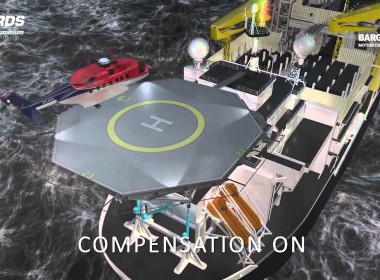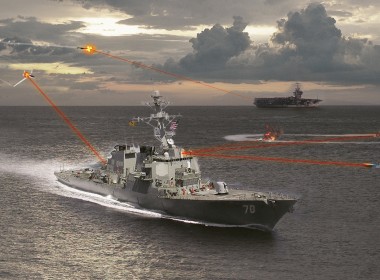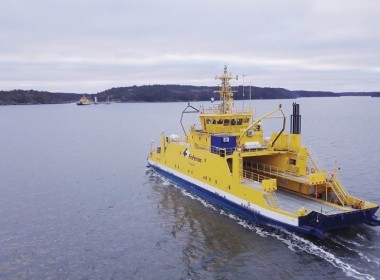COLUMN | Under the seas [The Bow Wave]
Two pieces of news over the past month or so got me thinking about the use of underwater research labs.
The first was the news out of China that the government is intending to develop an underwater laboratory that would be capable of operating in depths of up to 3,000 metres and second was that NASA had sent a team of astronauts to the ‘Aquarius’ marine lab, 18 metres below the surface of the waters off Key Largo in Florida.
It’s been a while since any underwater labs made the news so it will be interesting to see whether or not this recent spike of interest might cause others to have a second look at their utility for non-governmental uses.
Rumours of the Chinese desire for such a craft had been floating around the marine minerals space for a year or so with some people believing that it might be a converted nuclear submarine, similar to the old US Navy research sub NR-1 that was launched back in 1969. NR-1 was tasked with a number of similar missions to the Chinese project including search, object recovery, geological survey, oceanographic research, and installation and maintenance of underwater equipment.
Because of the military use of NR-1, which included recovery of advanced missiles and even pieces of the space shuttle Challenger, many people believe that the Chinese mobile lab will also be used for military reasons, potentially even as a part of the “Underwater Great Wall” that was reported recently, which aims to keep US and Russian subs out of the disputed waters of the East and South China Seas.
What do we know?
Very little information has been released on the Chinese lab and some big questions remain to be answered. The Chinese lab will be moveable, but whether it will be self-propelled or require an external means of mobility is not publicly known. A unit that can move on its own will be far more technically challenging and will likely be beyond the abilities of Chinese engineers. Even western engineers with decades of experience in designing ROVs for deep water use in oil fields would struggle to come up with a design that includes accommodation all whilst being safe three kilometres below the sea surface.
Will it be similar to the Deep Core II, seabed manned drilling rig that featured in the James Cameron movie The Abyss? The fictional drilling rig received power via an umbilical cord that was attached to a large SWATH-type mothership. The craft had battery power for self-sustaining operations in the event of a disconnection with the umbilical but otherwise relied on outside support. For mobility, the drill rig was towed by mini-subs but in the real world no battery-powered mini-sub would be able to move such a structure more than an inch.
So, could the facility be nuclear powered? The Chinese have experience with building nuclear-powered submarines and would be unlikely to worry about a different branch of government having nuclear powered equipment, especially if the lab has a secondary military purpose. Nuclear power would remove the need for surface support and would comfortably generate the power for moving the unit around the seabed. What effects the huge range of pressures would have on the nuclear reactor is another issue.
Given the huge investments that the Chinese have made in their search for space glory, could it perhaps have a use with their space corps? NASA recently sent an international team of astronauts, engineers and scientists to the Aquarius lab off the Florida coast.
The 16-day NASA Extreme Environment Mission Operations (NEEMO) 21 mission, aside from continuing America’s atrocious tradition of tortured acronyms, was meant to test equipment and procedures for a mission to Mars or an asteroid. A telemedicine device that will be used for future space missions was tested along with software for managing operations. Also used was a communications delay to replicate the up-to-15 minutes that it takes for a message to travel between Earth and Mars if they happen to be on opposite sides of the Sun.
“Equipment can fail, communication can be challenging and tasks can take longer than expected,” NEEMO Project Lead Bill Todd said. “Other tasks go just as planned. All cases are equally beneficial. It’s how we learn and how we are able to assemble all of this together so that someday we’re prepared for the unexpected when we are living on and traversing the Martian surface.”
Bill Todd is correct, but does this testing need to be done underwater? Couldn’t the same tests be done by locking the participants in a camper van? The Conshelf series of underwater habitats of the 1960s, the first ever inhabited, were used to see what tasks could be efficiently performed underwater by people living, or at the very least, based there. They even included a mock-up of a drill rig that was serviced by divers who left the habitat to perform simulated maintenance and repairs.
The result? Even the early remote control technology of the 60s and 70s was more efficient than having people down below the waves permanently. In today’s world, having people below the waves is expensive and the insurance costs alone would likely kill most attempts to get a commercial base started.
The Chinese claim of using the lab for mineral exploration just doesn’t ring true. An OSV with a towed sled and perhaps an ROV would cover more ground far quicker than some massive lab, and could undertake the operation for a fraction of the price.
Divers wouldn’t be able to exit the lab as the pressures would be ridiculous and so they would be left to conduct any research via remote control. In the pitch black of the seabed, operating something via remote control from 30 metres or 3,000 metres isn’t going to change the result of what is discovered or missed.
And so, with the exception of national pride, is there any real justification for the lab?
Any comments, or perhaps you’ve come across something interesting? Feel free to contact me at [email protected]







